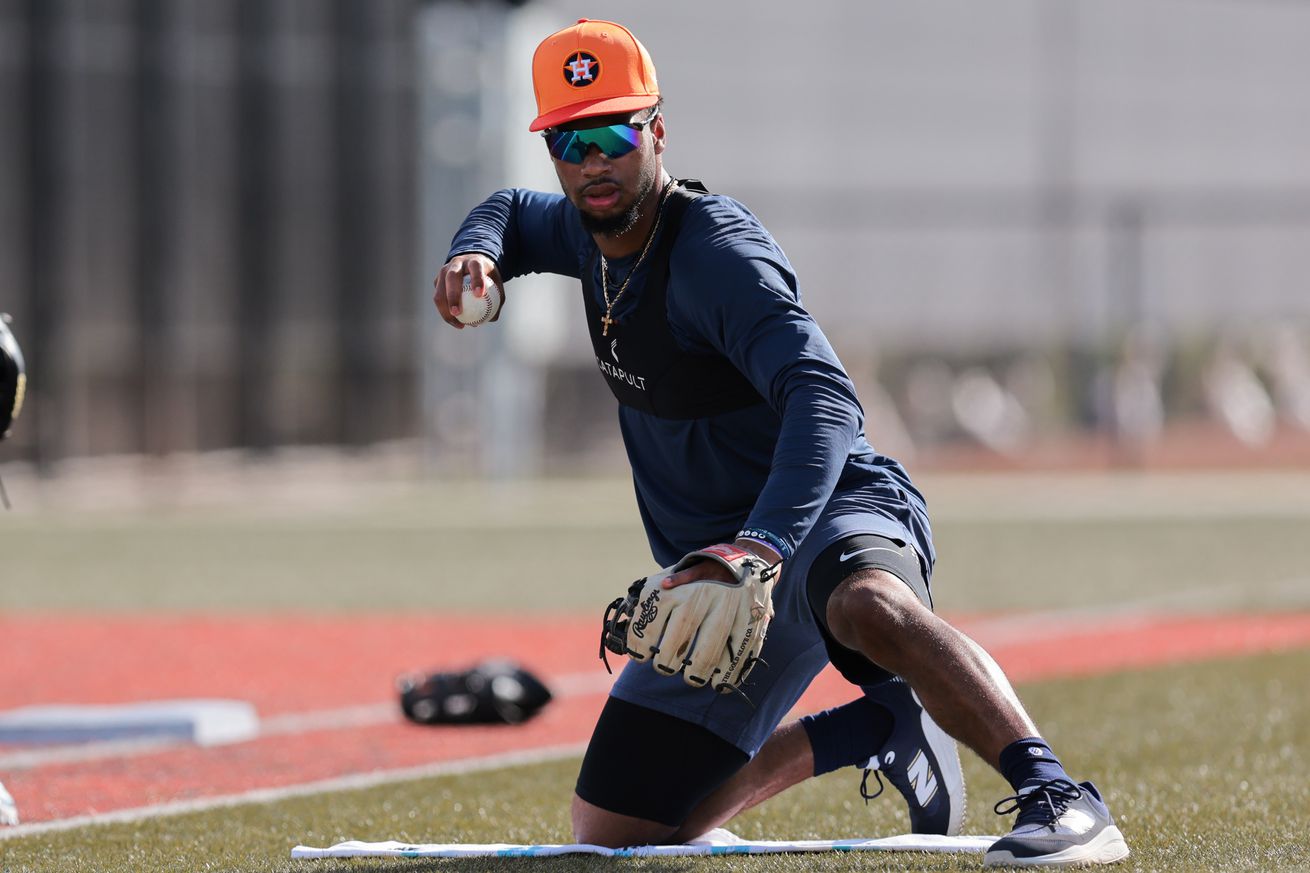
One of the Astros’ top prospects fits a position of need, but Brice Matthews still has room to improve before he can help the active roster.
With Jeremy Peña on the IL with a fractured rib, the Astros are incredibly short-handed on the position player side of the roster in terms of accomplished hitters. Don’t forget that this lineup is still missing Yordan Alvarez, and Peña was doing a lot of heavy lifting himself this season (4.1 fWAR, 146 wRC+ in 82 games). Losing your best position player for any period isn’t optimal, although the organization is possibly holding out some hope that Peña’s stay on the IL is a relatively short one.
The hope is Astros SS Jeremy Pena will miss just 2 weeks, per source.
Of course, the healing process will dictate the timeline.
— Will Kunkel (@WillKunkelV) June 30, 2025
In any case, two weeks, even in the best-case scenario without their shortstop, still isn’t a welcome development. His absence creates additional strain on a lineup that was improving in recent months, but has plenty of issues. Consistent run scoring will likely be determined by how well Isaac Paredes, Jose Altuve, Cam Smith, and Jake Meyers are swinging the bat. It is worth pointing out that in June, with Peña for the majority of the month, the Astros (112) outscored just nine teams. While there are some faint indications that Alvarez could return in the coming weeks, the reality is that Houston still faces a couple of weeks with a further hindered lineup.
In response to Peña’s IL stint, the Astros decided to call up Shay Whitcomb once again. Mauricio Dubón will assume the majority of playing time at shortstop in the interim, with Altuve possibly seeing more time at second base. That situation will likely be matchup dependent, not only for the opposing starting pitcher on the mound, but also for who is starting for the Astros. Frankly, Altuve shouldn’t handle second base duties when either Hunter Brown or Framber Valdez are on the mound, as their groundball tendencies don’t align well defensively with the franchise legend’s current fielding abilities.
So, how does this development relate to Brice Matthews? It is rather telling that Dana Brown decided against bringing up his first-ever draft pick as the club’s general manager at this time. We all know by now that Brown isn’t afraid to promote quickly, especially if the roster has a need, with Cam Smith being the most prominent example in his tenure.
With second base wide open at the moment, it feels like promoting Matthews to play the position now would’ve been close to an ideal time. The former first-round pick is hitting .285/.403/.492 with 10 home runs and a 135 wRC+ in 298 plate appearances with the Sugar Land Space Cowboys. On the surface, the numbers appear to align with the need. But any minor league numbers require a bit more thought. The PCL, for example, is known for its ballparks that inflate offensive numbers. Sugar Land, on the other hand, doesn’t have the same hitter-friendly reputation. Matthews’ home and away splits this season indicate as much.
In Sugar Land: .218/.358/.257, 0 home runs, 4 doubles, .615 OPS
On the road: .331/.434/.655, 10 home runs, 7 doubles, 5 triples, 1.089 OPS
In an environment quite similar to Houston, Matthews isn’t hitting for power or much impact otherwise. Even with above-average defense, he wouldn’t be adding much to the active roster as is. The road has been kinder to him, with a noticeable jump in power, but in environments where the ball carries more. Inflated numbers come with the territory. It is also worth noting that Brown has expressed concern about Matthews’ contact rate, as reported by Chandler Rome earlier in June, and I do not envision those concerns being alleviated in the meantime with a contact rate of 66.5%. For context, the average contact rate in baseball through June 30 this season is 77.2%. Only two qualified Major League hitters (Gabriel Arias and Michael Toglia) have lower contact rates than Matthews’ current rate.
Contact rate isn’t the only concern, though. Matthews still has a strikeout issue to address, even if his overall swing rate (41.9%) is below the Major League average (47.4%). Thus far in 2025, Matthews has seen his strikeout rate hovering around 28.5%, a slight improvement compared to his 31.4% rate a season ago. An improved walk rate by roughly 2% indicates better swing decisions in general, but his swinging strike rate remains elevated (14%) compared to the average (10.8%). Against stronger competition, there is a legitimate concern that not only could his batted ball tendencies be a problem, but also his propensity to strike out. Not precisely the underlying stats that inspire confidence at this moment.
To be clear, Matthews is a talented player with a potential future in the big leagues. His numbers, even if boosted on the road, have held steady in May (1.033 OPS) and June (.960 OPS). But there are questions about his ceiling and floor as an everyday player for a reason, and his numbers in Triple-A haven’t fully addressed those concerns. For the Astros to promote him anytime soon, those underlying metrics require some improvement.